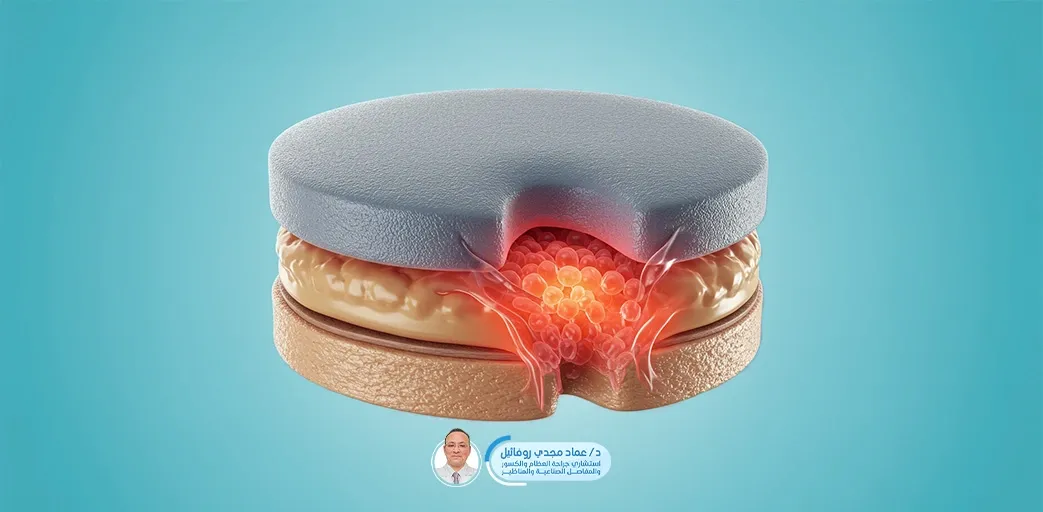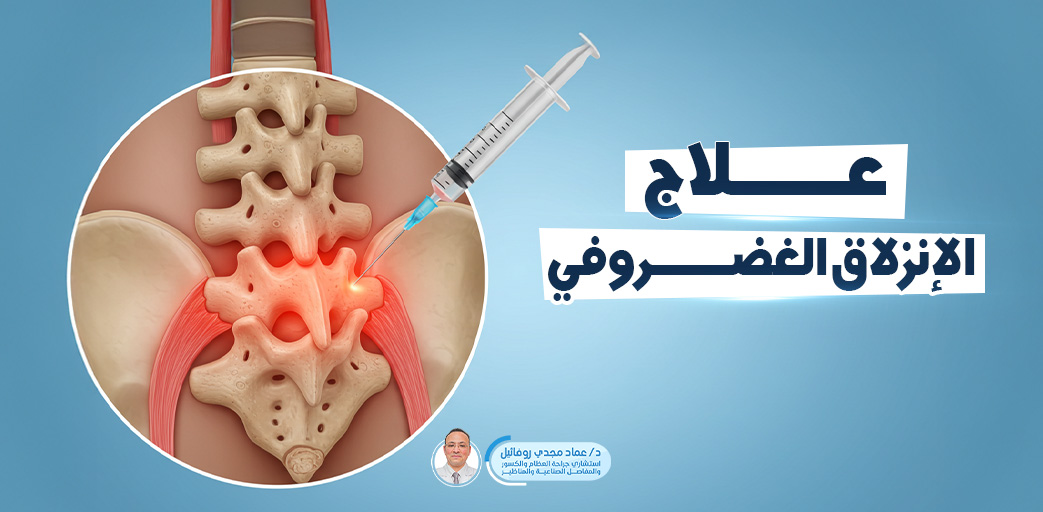Herniated disc treatment has become a major concern for many people, especially with the rise of sedentary lifestyles that involve long hours of sitting and limited movement.
Treatment methods vary from one case to another, ranging from rest, exercises, and physical therapy to surgical intervention in more advanced cases.
In this article, we cover:
-
Symptoms that require treatment
-
Treatment plan from rest to surgery
-
Herniation grades and their effect on treatment
-
Key exercises
-
Practical preventive tips
Symptoms That Require Herniated Disc Treatment
Symptoms vary depending on the herniation location (lumbar – cervical – thoracic), but lumbar herniation is the most common. Key symptoms include:
-
Lower back or neck pain, worsens with movement or prolonged sitting
-
Pain radiating to the leg or arm (sciatica or shoulder pain)
-
Tingling or numbness in the limbs, worsens when bending or sitting
-
Muscle weakness or difficulty moving
-
Pain that prevents sleep or disrupts daily activities
When Is It an Emergency?
You should go to the ER immediately if you experience:
-
Loss of bladder or bowel control
-
Sudden weakness in the legs or feet
-
Numbness in the genital area or between the thighs
Herniated Disc Treatment: From Rest to Surgery
1. Rest and Lifestyle Adjustments
-
Reduce strenuous activities like bending or lifting
-
Avoid prolonged sitting or standing
-
Use a medical pillow and sleep in a proper position
Goal: Reduce pressure on vertebrae and the affected disc
2. Medication
-
Painkillers like paracetamol or ibuprofen
-
Muscle relaxants
-
Anti-inflammatory medications
-
Sometimes local cortisone injections in the spine
Goal: Manage pain and prevent worsening
3. Physical Therapy
-
Exercises to strengthen the back and abdominal muscles
-
Stretching to improve spinal flexibility
-
Heat or cold therapy
-
Electrical nerve stimulation in some cases
Goal: Strengthen support muscles and improve balance
4. Assistive Tools
Goal: Reduce pressure and make daily movement easier
5. Surgical Intervention (only when necessary)
Surgery is considered if:
-
No improvement after 6–8 weeks of conservative treatment
-
Severe limb weakness
-
Loss of bowel/bladder control
-
Severe pain that doesn't respond to medication
Surgery types:
Herniated Disc Grades and Their Impact on Treatment
Knowing the grade helps the doctor choose the right treatment:
1. Mild Bulge
-
Disc remains inside its outer shell and presses on surrounding fibers
-
Treatment: Relative rest, anti-inflammatory meds, posture correction, and exercise
2. Moderate Herniation
-
Disc presses on nerves, causing pain and numbness
-
Treatment: Regular physical therapy, stronger meds, muscle strengthening, regular monitoring
3. Severe Herniation

-
The outer disc layer tears, and the inner material presses on nerves
-
Treatment: Surgery if conservative methods fail
4. Sequestered Disc
-
A piece of the disc breaks off and moves into the spinal canal, causing severe symptoms
-
Treatment: Emergency surgery to prevent permanent nerve damage
-
Note: Even in advanced herniation, doctors may delay surgery if there are no serious neurological symptoms, and focus on conservative treatment first.
Exercises to Relieve Pain and Improve Mobility
It’s crucial to perform the right exercises under specialist supervision or after consulting a doctor.
Before starting:
1. Pelvic Tilt
-
Position: Lie on your back with knees bent and feet flat
-
Movement: Tighten abdominal muscles and press your lower back toward the floor, then relax
-
Benefit: Strengthens lumbar muscles
2. Single Knee-to-Chest Stretch
-
Position: Lie on your back
-
Movement: Pull one knee toward your chest while keeping the other bent. Switch legs.
-
Benefit: Reduces pressure and improves flexibility
3. Bridge Exercise
-
Position: Lie on your back with knees bent
-
Movement: Slowly lift your hips, hold for 3–5 seconds, then lower down
-
Benefit: Builds strength in the lower back and core
Does a Medical Back Brace Help?
Yes, especially in early stages or during acute pain episodes.
Benefits:
When It’s Not Recommended:
-
Overuse may weaken back muscles
-
Should not be worn during sleep or more than 4–6 hours a day without medical advice
-
It is not a standalone treatment, but part of a full recovery plan
Daily Tips to Speed Recovery and Prevent Recurrence
-
Sit in a proper position on a comfortable chair
-
Avoid long periods of sitting without movement
-
Avoid lifting heavy objects; if necessary, lift correctly by bending the knees
-
Do exercises regularly as recommended by your physical therapist
-
Sleep on a medium-firm mattress and avoid sleeping on your stomach
-
Maintain a healthy weight to reduce spinal pressure
-
Divide daily tasks and take regular breaks
-
Use a back brace only when necessary and under medical supervision
No matter the degree of herniation, adhering to the right treatment plan is key to improving symptoms and avoiding complications.
Remember: Treating a herniated disc is not only about medication or surgery — it includes exercises, correcting daily habits, and regular follow-up with your doctor to maintain a healthy spine.




